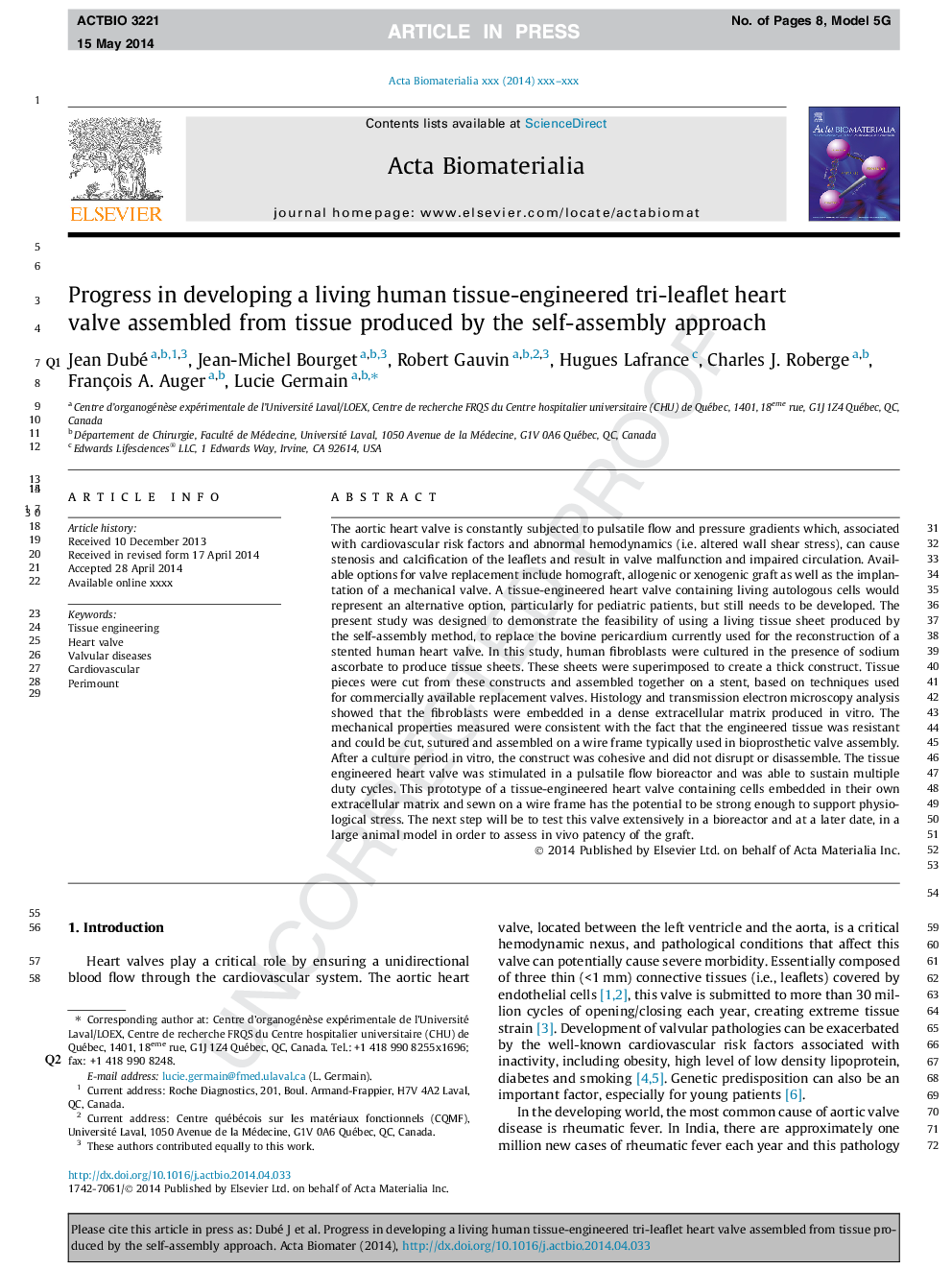| کد مقاله | کد نشریه | سال انتشار | مقاله انگلیسی | نسخه تمام متن |
|---|---|---|---|---|
| 10159145 | 37 | 2014 | 8 صفحه PDF | دانلود رایگان |
عنوان انگلیسی مقاله ISI
Progress in developing a living human tissue-engineered tri-leaflet heart valve assembled from tissue produced by the self-assembly approach
ترجمه فارسی عنوان
پیشرفت در ایجاد یک دریچه قلب سه برگه انباشته شده بافت انسان، جمع آوری شده از بافت تولید شده توسط روش خودمراقبتی است
دانلود مقاله + سفارش ترجمه
دانلود مقاله ISI انگلیسی
رایگان برای ایرانیان
موضوعات مرتبط
مهندسی و علوم پایه
مهندسی شیمی
بیو مهندسی (مهندسی زیستی)
چکیده انگلیسی
The aortic heart valve is constantly subjected to pulsatile flow and pressure gradients which, associated with cardiovascular risk factors and abnormal hemodynamics (i.e. altered wall shear stress), can cause stenosis and calcification of the leaflets and result in valve malfunction and impaired circulation. Available options for valve replacement include homograft, allogenic or xenogenic graft as well as the implantation of a mechanical valve. A tissue-engineered heart valve containing living autologous cells would represent an alternative option, particularly for pediatric patients, but still needs to be developed. The present study was designed to demonstrate the feasibility of using a living tissue sheet produced by the self-assembly method, to replace the bovine pericardium currently used for the reconstruction of a stented human heart valve. In this study, human fibroblasts were cultured in the presence of sodium ascorbate to produce tissue sheets. These sheets were superimposed to create a thick construct. Tissue pieces were cut from these constructs and assembled together on a stent, based on techniques used for commercially available replacement valves. Histology and transmission electron microscopy analysis showed that the fibroblasts were embedded in a dense extracellular matrix produced in vitro. The mechanical properties measured were consistent with the fact that the engineered tissue was resistant and could be cut, sutured and assembled on a wire frame typically used in bioprosthetic valve assembly. After a culture period in vitro, the construct was cohesive and did not disrupt or disassemble. The tissue engineered heart valve was stimulated in a pulsatile flow bioreactor and was able to sustain multiple duty cycles. This prototype of a tissue-engineered heart valve containing cells embedded in their own extracellular matrix and sewn on a wire frame has the potential to be strong enough to support physiological stress. The next step will be to test this valve extensively in a bioreactor and at a later date, in a large animal model in order to assess in vivo patency of the graft.
ناشر
Database: Elsevier - ScienceDirect (ساینس دایرکت)
Journal: Acta Biomaterialia - Volume 10, Issue 8, August 2014, Pages 3563-3570
Journal: Acta Biomaterialia - Volume 10, Issue 8, August 2014, Pages 3563-3570
نویسندگان
Jean Dubé, Jean-Michel Bourget, Robert Gauvin, Hugues Lafrance, Charles J. Roberge, François A. Auger, Lucie Germain,
